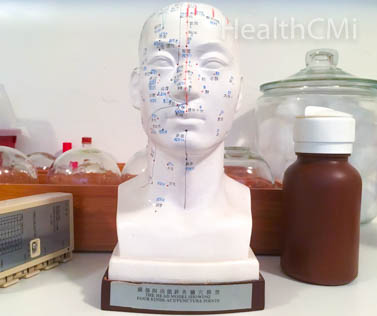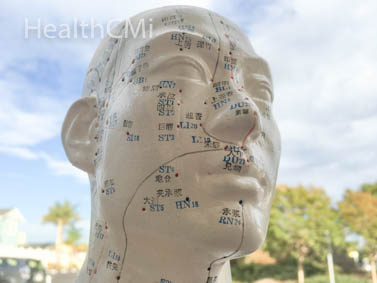Acupuncture and moxibustion are effective for the treatment of diabetes. Researchers from the Nanjing University of Chinese Medicine conclude that acupuncture combined with moxibustion has a total effective rate of 84.78% for the treatment of type 2 diabetes.  The researchers also investigated the implementation of acupuncture as a standalone therapy. Without moxibustion, acupuncture had a total effective rate of 69.57%. As are result, the researchers conclude that the combined therapy produces superior patient outcomes.
The researchers also investigated the implementation of acupuncture as a standalone therapy. Without moxibustion, acupuncture had a total effective rate of 69.57%. As are result, the researchers conclude that the combined therapy produces superior patient outcomes.
Acupuncture and acupuncture plus moxibustion caused significant improvements in enteroinsular axis indicators and lipids for type 2 diabetics. Specifically, the total effective rate was determined by measurements of several clinical factors including changes in the following:
- Insulin Sensitivity Index (ISI)
- Fasting Insulin (FINS)
- Fasting Leptin (FLP)
- Fasting Plasma Glucose (FPG)
- Homa Insulin Resistance Index (Home-IR)
- Insulin Secretion Index (Homa-β)
- Body Mass Index (BMI)
- HDL increases
- LDL decreases
- Total cholesterol
- Triglycerides
The acupuncture points used in the study included the following primary acupoint selections:
- BL29, Pishu
- LV13, Zhangmen
- BL21, Weishu
- CV12j, Zhongwan
- LV14, Qimen
- BL23, Shenshu
- GB25, Jingmen
- SP6, Sanyinjiao
- CV6, Qihai
- CV4, Guanyuan
- ST36, Zusanli
- DU4, Mingmen
Moxibustion was applied to acupoints CV6, CV4, ST36, and DU4. Two groups were tested with acupuncture, one with moxibustion and one without. Both groups were given acupuncture treatments at a rate of once every other day for three months. Total needle retention time for each acupuncture session was 30 minutes. Acupuncture with moxibustion achieved an 84.78% total success rate and standalone acupuncture achieved a 69.57% total effective rate.
Hu et al. had similar findings; acupuncture combined with moxibustion was more effective than standalone acupuncture for the treatment of diabetic gastroparesis. This condition involves delayed gastric emptying due to diabetic neuropathy affecting the vagus nerve, which controls the movement of food in the digestive tract.  In gastroparesis, the stomach takes excess time to empty its contents. This can lead to spikes in blood glucose levels. Symptoms include heartburn, nausea, vomiting, bloating, gastroesophageal reflux, poor appetite, and weight loss.
In gastroparesis, the stomach takes excess time to empty its contents. This can lead to spikes in blood glucose levels. Symptoms include heartburn, nausea, vomiting, bloating, gastroesophageal reflux, poor appetite, and weight loss.
Hu et al., from the Shanghai University of TCM, used the following acupuncture points: ST36, PC6 (Neiguan), CV12. Moxibustion was added to CV12. This protocol was found more effective than adding electroacupuncture to acupoint ST36. In addition, the moxibustion protocol was more effective than injecting 1 ml of Huangqi (Astragalus) extract into each acupoint.
The findings of Li et al. and Hu et al. demonstrate that acupuncture is effective for the treatment of general diabetic concerns and diabetic gastroparesis. However, the combination of acupuncture and moxibustion increases clinical efficacy. Both research teams conclude that acupuncture combined with moxibustion is an important and effective treatment protocol for the treatment of diabetes.
References:
Li, Y. Q., Wang, Y. D., Liu, Z. C. & Xu, B. (2014). Observation on Clinical Effect of Conventional Acupuncture with Warm Acupuncture on Female type 2 diabetes mellitus (T2DM) Patients of Dual Deficiency of Yin and Yang Syndrome. World Science and Technology – Modernisation of Traditional Chinese Medicine. 16 (8).
Liu Z C, Sun F M, Zhu M H, et al. Effect of acupuncture on insulin resistance in Non-Insulin-Dependent diabetes mellitus. Journal of Acupuncture and Tuina Science, 2004, 2(6):8-11.
Hu, Z. H., Wang, Y., Huang, J. Y., Xu, J. H., Jiang, Z. F. & Wang, S. S. (2014). Research for Optimizing the Acupuncture-moxibustion Treatment Protocol for Diabetic Gastroparesis. Shanghai Journal of Acupuncture and Moxibustion. 33 (12).
He, Y. C., Liu, J. H. & Li, Y. Y., et al. (2003). Electroacupuncture treatment on 25 cases Type 2 Diabetic Gastrointestinal Dysfunction and its Short Term Treatment Effectiveness. New Journal of Traditional Chinese Medicine. 35(2): 46.
Tong, Z. H. (1999). The relationship between Diabetes and Diabetic Gastroparesis. Bulletin of Science and Technology. 15(6): 457-461.


